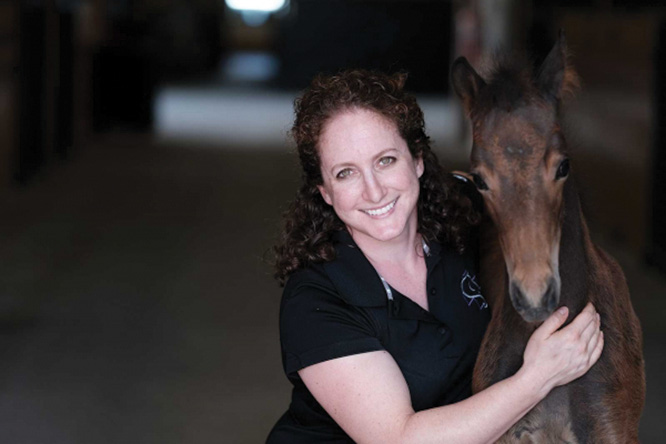Equine reproduction has significantly advanced in the last 30 years. On the stallion side, the development of semen extenders, processing techniques, and shipping containers has allowed cooled and frozen semen to be shipped worldwide. These advances have been beneficial to the horse industry in many different ways.
First of all, it allows for the spreading of genetics that previously would have been limited by horse transportation abilities. Second, it limits the spread of certain transmissible diseases. While there are sexually transmitted diseases in horses, general health problems such an influenza, herpes virus, and even parasites like lice cannot be transmitted via live cover due to horse to horse contact. Finally, the freezing of semen has allowed for the preservation of genetics that would otherwise be lost to the horse industry.
Initially freezing semen was used to preserve rare genetics from endangered animals. It is commonly used now to preserve genetics from infertile or deceased stallions. Cryopreserved semen can also be tested for inherited diseases, which in turn can help decrease the number of foals that are born with preventable genetic conditions.
Mare reproduction technology lags slightly behind that of stallions, but in the last 10 years significant advances have been made. Embryo transfer has become common in the equine industry. Mares that have valuable genetics, are in the midst of a show career, or have medical reasons for not carrying their own pregnancy are good candidates for embryo transfer.
Once an embryo has been created and flushed, it can be transferred directly to a recipient mare fresh on farm, cooled shipped and then transferred to a recipient herd, or vitrified. Embryo vitrification is similar to freezing, except different solutions are used and the embryo itself is cooled into a state of suspended animation.
Vitrification allows for longer distance transfer of embryos, thawing and transfer once a recipient is available, or thawing and transfer at a more optimal time of year. Vitrification has become more commonly used when embryos are flushed in the fall (in the northern hemisphere) and early spring babies are desired. The embryo is stored until spring, then transferred and a foal is produced eleven months later.
Most recently, oocyte aspiration (OPU) has become commercially available to horse owners. Oocyte aspiration involves taking the (oocytes) eggs from the ovaries of a mare via transvaginal ultrasound-guided aspiration and filtering the aspirate to catch the oocytes. The oocytes are then shipped to a laboratory where they are injected directly with sperm in a process call intracytoplasmic sperm injection (ICSI). Each individual egg is injected with a single sperm, then matured in a laboratory to monitor for development into an embryo. On average, 20-30% of the oocytes aspirated develop into an embryo. This is compensated for by aspirating multiple oocytes per attempt. If an embryo develops it can be treated like a flushed embryo in that it can be transferred directly or vitrified for later transfer. The use of OPU bypasses many potential problems in a donor mare, including but not limited to uterine infections, cervical damage, oviductal patency issues, or ovulation issues. Abnormal genetics or oocyte quality cannot be compensated for using the current available advanced techniques.
On the stallion side, ICSI is used for stallions in which there is a very limited amount of semen available or the semen is of poor quality (either motility or morphology). Genetic abnormalities in stallion semen cannot be compensated for by the use of ICSI.
One caveat when using advanced reproductive techniques in horses is that fertility has an inherent genetic component. Just like coat color, conformation, and genetic diseases, fertility can be inherited. Propagation of poor or low fertility animals through advanced reproductive techniques may lead to foals, however the long-term fertility of these individual animals and the breed is unknown.
Sarah Eaton graduated from the Purdue University School of Veterinary Medicine. After graduation, she completed an internship in equine reproduction and general practice in Arizona and a residency in Theriogenology (animal reproduction) at the Western College of Veterinary Medicine. She passed her board examinations to become a Diplomate of the American College of Theriogenologists. Dr. Eaton is a Theriogenologist at Saginaw Valley Equine Clinic. You can email her at sarah@saginawvalleyequine.com or visit her at www.saginawvalleyequine.com.




You must be logged in to post a comment Login